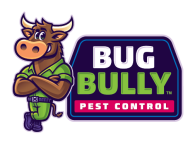American Cockroach Facts
Here are five facts about American cockroaches:
- Size and Appearance: American cockroaches (Periplaneta americana) are one of the largest cockroach species. Adult American cockroaches typically range from 1.4 to 1.6 inches in length. They are reddish-brown in color and have a distinctive, elongated oval shape.
- Habitat: These cockroaches are commonly found in warm and damp environments. They are often associated with areas such as basements, sewers, and dark, humid spaces. Despite their name, they are not exclusive to America; they are found in many parts of the world.
- Diet: American cockroaches are omnivores and can consume a wide variety of foods. They are known to eat decaying organic matter, as well as starchy and sugary substances. In urban environments, they may feed on human food, crumbs, and garbage.
- Lifecycle: American cockroaches undergo incomplete metamorphosis, with three life stages: egg, nymph, and adult. Nymphs resemble adults but are smaller and lack wings. They molt several times before reaching maturity. The entire lifecycle can take anywhere from six months to over a year.
- Flight Capability: American cockroaches are capable of flight, although they are more commonly known for their rapid crawling. They have well-developed wings and can cover short distances by flying, especially in warm, humid conditions. Flight is often used as a means of escaping danger or finding a new location.
How do cockroaches get into homes?
Cockroaches possess a remarkable ability to infiltrate homes through various entry points. Commonly, these resilient pests exploit structural vulnerabilities, gaining access through cracks and openings in walls, windows, doors, and foundations. Additionally, poorly sealed doors and windows offer convenient pathways for cockroach ingress. The insects may navigate through gaps in weather stripping or enter homes through open doors and windows. Sewer and drainage systems also serve as potential conduits, allowing cockroaches to traverse plumbing and sewer pipes.
Moreover, cockroaches can be inadvertently transported into homes via infested items such as bags, boxes, or used furniture. Infestations can further propagate through shared walls, pipes, or interconnected spaces, with cockroaches migrating from neighboring homes or buildings. To mitigate the risk of infestation, homeowners are advised to maintain meticulous cleanliness, seal potential entry points, and address any structural vulnerabilities, thereby creating an inhospitable environment for these adaptable pests. Regular inspection and cleaning of groceries, proper storage of food, and prompt elimination of standing water are additional measures that contribute to an effective pest prevention strategy.








